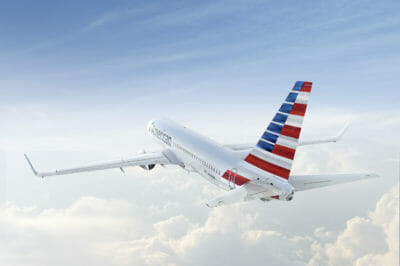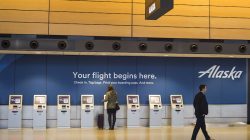The Wall Street Journal is reporting that Alaska Airlines has already signed an agreement (not yet announced) to purchase Virgin America for $2.5 billion. That’s a huge premium over Virgin America’s valuation last week and suggests Alaska may be overpaying.
I’ve already discussed why I think JetBlue might be a better strategic choice for Virgin America given its complementary route network and comparable fleet. And I suggested that Alaska won’t keep any of Virgin America’s airline partners (though this has no bearing on making a purchase — just what happens after). But let’s consider some other reasons why it might make sense for Alaska to make the purchase.
Mixed Fleet? Not a Big Problem
The mixed fleet isn’t as big an issue as I originally thought. Although Virgin America operates Airbus and Alaska Airlines is proudly all-Boeing, it turns out that Virgin America only owns 8 of its 60 planes. The rest are leased, according to this article that Matt shared on Chasing Alpha. Alaska already has 152 Boeing 737s with commitments or options on another 108. They could probably divest the Airbus fleet as they delay retirement of their older 737s and exercise those options.
More Links with American
Virgin America doesn’t have much of a hub outside of San Francisco, but it does have large operations in Los Angeles and Dallas – Love Field. Increasing its presence in SFO and LAX (and moving to Virgin’s gates in T2 from the international terminal) would benefit Alaska’s partnership with American Airlines. It would probably give up its slots in Dallas.
This may benefit American (and without much risk) more than it helps Alaska, but anything that makes it easier for connecting passengers to begin or end their travel on Alaska Airlines is probably good news.
Bigger Hubs on the West Coast
Although it has been expanding to the East Coast, Alaska Airlines is still primarily a West Coast airline. It’s been flying between California and Alaska for decades, is a huge player in the Hawaii market, and is launching new routes to Mexico and Costa Rica. Its current hubs are in Anchorage, Seattle, Portland, and Los Angeles.
A lot of those flights to Latin America originate in Los Angeles (including a proposed flight to Cuba), so it would help to have a larger presence there. Meanwhile it never really established a preference for Oakland, San Jose, or San Francisco. Adding more flights out of SFO would seem to make that Alaska’s hub of choice in the Bay Area, becoming the second largest carrier behind United.
One argument for a purchase by JetBlue was that it would give that airline a larger presence on both coasts. But focusing on the East Coast seems to have worked well so far. Why can’t the same be true for Alaska on the West Coast?
Conclusion
All of these things would make Alaska Airlines’ presence stronger on the West Coast; improve relationships with its friendlier partner, American Airlines; and make things more difficult for its frienemy, Delta Air Lines. Alaska would also be eliminating a competitor for traffic to Hawaii (Virgin America just launched routes to Honolulu and Maui).
It does create some concern that Alaska is getting in over its head. In the past few years Alaska has, in my opinion, done a lot to continue succeeding in a complicated industry. Delta started attacking the Seattle market, but Alaska used that opportunity to shift some planes to new routes and expand eastward. As other carriers have modernized their fleets, Alaska has also worked to improve its hard and soft products. And as other major loyalty programs have cut back on benefits and rewards, Alaska has — with some exceptions — worked to add more.
- New elite benefits on Emirates, Icelandair, and British Airways.
- New partnerships with Icelandair and Hainan Airways.
- New waivers on change and cancellation fees for all passengers more than 60 days before departure.
- New bonuses that offer more miles for elite members and those in premium cabins.
Does this mean that Alaska can easily absorb Virgin America while continuing to fight its other battles? No, and I don’t think the integration will be easy. But Alaska has been growing up fast and hasn’t made a major stumble yet. Virgin is probably small enough that I think it’s within their capabilities. Alaska has made many gambles that have paid off so far.
For an airline that has consistently stated its desire to remain independent, getting bigger may be the only option. Acquiring Virgin America will be difficult for Alaska Airlines. Letting JetBlue have them would be worse.





